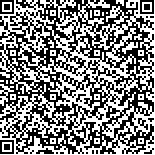|
| 引用本文: | 任翊卓,韩学凯,左佳俊,欧阳雪梅,段虎,隋丽英.Piwi基因参与两性卤虫(Artemia franciscana)的生殖调控研究.海洋与湖沼,2021,52(6):1567-1576. |
| |
|
| |
|
|
| 本文已被:浏览 1061次 下载 941次 |

码上扫一扫! |
|
|
| Piwi基因参与两性卤虫(Artemia franciscana)的生殖调控研究 |
|
任翊卓, 韩学凯, 左佳俊, 欧阳雪梅, 段虎, 隋丽英
|
|
亚洲区域卤虫参考中心 天津科技大学海洋与环境学院 天津 300457
|
|
| 摘要: |
| Piwi(P-element induced wimpy testis)基因编码Piwi蛋白,在生殖干细胞的自我更新、减数分裂过程、RNA沉默和转录调控中起重要作用。为探究Piwi基因参与两性卤虫生殖发育的作用,从两性卤虫Artemia franciscana转录组中筛选获得Piwi基因开放阅读框,进行序列分析和结构域预测等生物信息学分析,采用qPCR技术研究该基因在A.franciscana生殖腺发育不同时期表达特征,并利用RNAi显微注射技术探究其功能。生物信息学分析表明,A.franciscana Piwi基因的开放阅读框长2 619 bp,编码872个氨基酸;Piwi基因编码的蛋白分子量为98.11 kDa,等电点为9.50,为碱性亲水性蛋白,无信号肽和跨膜结构;存在Piwi和PAZ结构域及ArgoL1结构域,二级结构以α-螺旋为主,三级结构与之对应;系统进化树显示A.franciscana与蚤状溞和大型溞的Piwi序列相似性最高。qPCR结果表明,Piwi基因在卵巢的卵黄发生晚期和晚期胚胎表达量最高,显著高于卵黄发生早期和早期胚胎(P<0.01);Piwi基因在精巢的未成熟期表达量最高,显著高于成熟早期、成熟中期和成熟晚期(P<0.01)。RNAi结果显示,该方法能显著降低Piwi基因的表达水平(P<0.01),并导致A.franciscana所产后代均为休眠卵,说明Piwi基因不但在A.franciscana生殖发育调控起重要作用,而且可能在其繁殖方式决定过程中起关键作用。研究结果为两性卤虫Piwi/piRNA功能和分子机制调控的研究提供了基础信息,将有助于揭示Piwi基因参与调控两性卤虫生殖发育机制。 |
| 关键词: Artemia franciscana Piwi基因 生殖腺 基因表达特征 RNAi |
| DOI:10.11693/hyhz20210300069 |
| 分类号:Q789;Q956;S966 |
| 基金项目:天津市自然科学基金项目,18JCQNJC78500号;天津市科技支撑计划项目,17ZXZYNC00060号;教育部长江学者和创新团队发展计划资助项目,IRT-17R81号。 |
| 附件 |
|
| THE REPRODUCTIVE REGULATION OF Piwi IN BISEXUAL ARTEMIA FRANCISCANA |
|
REN Yi-Zhuo, HAN Xue-Kai, ZUO Jia-Jun, OUYANG Xue-Mei, DUAN Hu, SUI Li-Ying
|
|
Asia Regional Artemia Reference Center, College of Marine and Environmental Sciences, Tianjin University of Science and Technology, Tianjin 300457, China
|
| Abstract: |
| Piwi (P-element induced wimpy testis) encoded Piwi protein, and it plays an important role in self-renewal, meiosis, RNA silencing and transcriptional regulation of germ stem cells. To study the role of Piwi in the reproductive development of bisexual Artemia, the open reading frame (ORF) of Piwi was obtained from Artemia franciscana transcriptome, and bioinformatics including sequencing and domain prediction were analyzed. The expression of Piwi in different stages of gonad development of A. franciscana were characterized by qPCR, and its function was verified by microinjection RNAi technology. Results showed that the ORF length of Piwi was 2619 bp, encoding 872 amino acid with a predicted molecular weight of 98.11 kDa, and a theoretical isoelectric point of 9.50. Piwi protein was an alkaline hydrophilic protein containing no signal peptide and transmembrane structure, and included the Piwi and PAZ domains as well as the ArgoL1 domain. The secondary structure was mainly composed of α-helix, which is consistent with the tertiary structure. The phylogenetic tree demonstrated that the Piwi sequences of A. franciscana were the most similar to those of Daphnia pulex and Daphnia magna. As shown in the qPCR analysis, the Piwi expression in the later oocytes and later embryos was significantly higher than those of early oocytes and early embryos in ovary (P<0.01). The expression level of Piwi in testis was the highest in the immature stage, which was significantly higher than those in early, middle and late maturation stages (P<0.01). In addition, applying RNAi (RNA interference) technology could significantly reduce the expression level of Piwi (P<0.01) and all offsprings were cysts, suggesting that Piwi gene not only plays an important role in the regulation of reproductive development of A. franciscana, but also may play a key role in determining the reproductive modes of A. franciscana. This study provided basic information for analyses on Piwi/piRNA pathway functions and molecular mechanisms in bisexual Artemia, and will help to reveal the role of Piwi in regulating the reproductive mechanism in bisexual Artemia. |
| Key words: Artemia franciscana Piwi gene gonad gene expression character RNAi |
|
|
|
|
|
